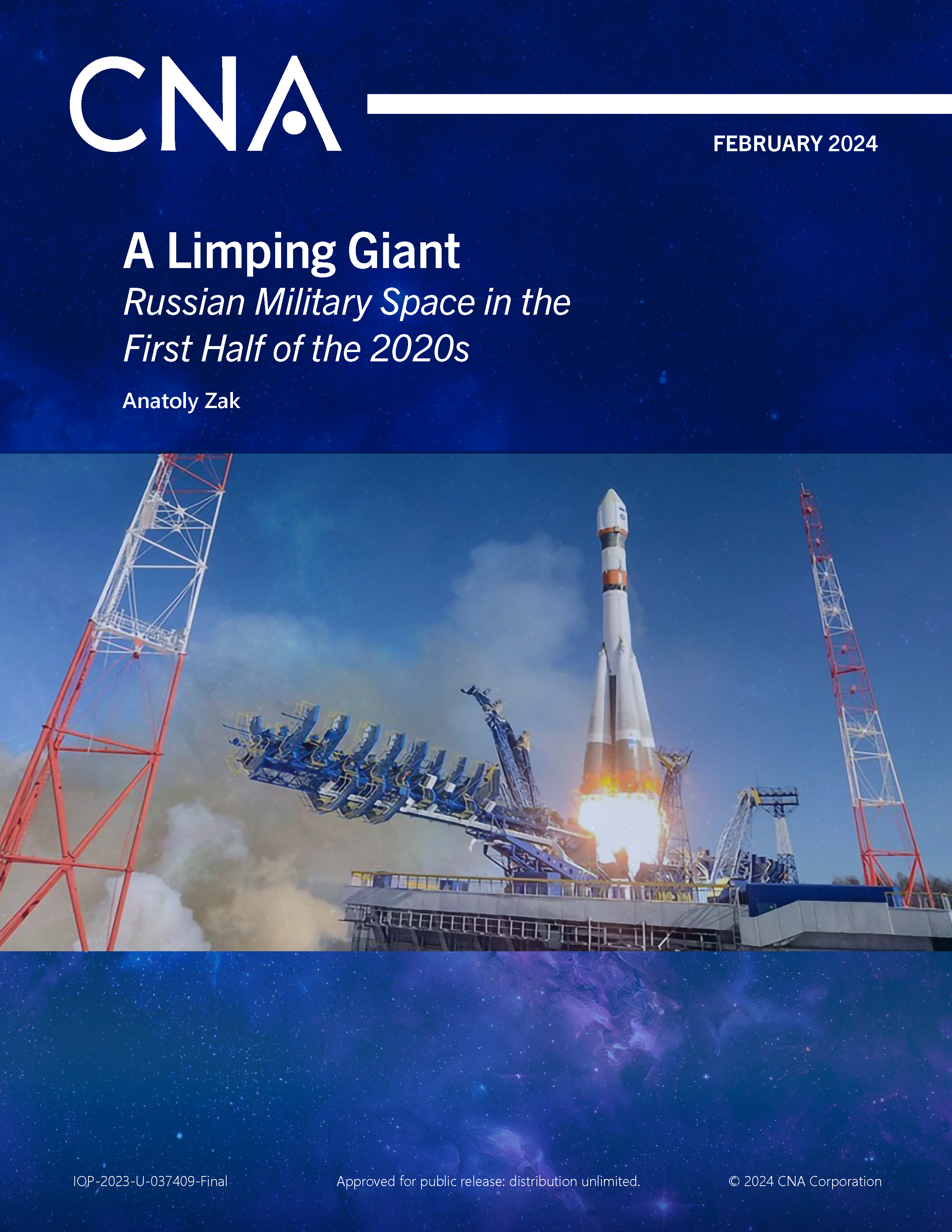This paper provides an overview of the Russian military space program from 2019 to 2023, including ongoing activities and known plans, in connection to current military space activities and overall Russian military doctrine. It also provides an outlook of the general direction and prospects for Russian military activities for the remainder of the decade (2020s). This paper is intended as an update to CNA’s 2019 report on Russia’s military space program.
It is obvious that for the rest of this decade, the Russian space program will continue to be shaped by the invasion of Ukraine and Moscow’s confrontation with the West. The Kremlin has been on a path it has characterized as the creation of the “multi-polar world” and strategic realignment to the Global South for almost two decades; however, after the annexation of Crimea in 2014, this process accelerated, and it supercharged following the February 24, 2022, full-scale invasion of Ukraine.
The new geopolitical situation has profoundly affected Russian military space policy and Roscosmos, the main developer of military and dual-use spacecraft. In April 2022, then head of Roscosmos, Dmitry Rogozin, stated that “in the current situation, Roscosmos has to become a much rigid structure [sic], working first of all for the benefit of defense and security of the country.” To achieve these new tasks and goals, Roscosmos would have to change its financial model, according to Yuri Borisov, who replaced Rogozin as head of Roscosmos in July 2022.
At first sight, the overall militarization of the Russian economy and society, accompanied by major investments into the defense sector, could be seen as beneficial to any industry connected to the military, including space. However, it is unclear how much of that financial windfall has gone toward the army’s basic and immediate needs (e.g., boots and artillery shells) or what share is available for high-end long-term projects, including spacecraft. A bigger question is whether the Russian high-tech sector is capable of significant progress under conditions of isolation from the West.
On the surface, Russian military and space officials have pursued the proclaimed goal of refocusing their efforts on the affiliate BRICS countries (i.e., Brazil, India, China, and South Africa) and beyond; however, they have made little progress thus far. Moscow tried to expand already established civilian and military space cooperation with new partners such as Egypt and South Africa, which both had previously ordered Russian dual-use spacecraft with very mixed results. During 2023, Borisov visited Algeria and Egypt, and Minister of Defense Sergei Shoigu visited North Korea at the end of July. These meetings were followed by the summit between Kim Jong Un and Vladimir Putin in September 2023, which began with a highly advertised tour of Russia’s new Vostochny spaceport by the North Korean dictator. However, by its own admission, the Kremlin reached no agreements with North Korea.
In this context, Russia’s military space cooperation with Iran was notable. For the first time, Russia began preparing a launch of a geostationary communications satellite for Iran on a Proton rocket, which would be a rare but potentially important foreign assignment for Roscosmos after decades and billions of dollars’ worth of commercial cooperation with the West. In 2022, Russia launched a reconnaissance satellite for Iran, which was the only foreign customer for its spacecraft at the time.
Download reportApproved for public release: distribution unlimited.
Details
- Pages: 50
- Document Number: IOP-2023-U-037409-Final
- Publication Date: 2/22/2024
